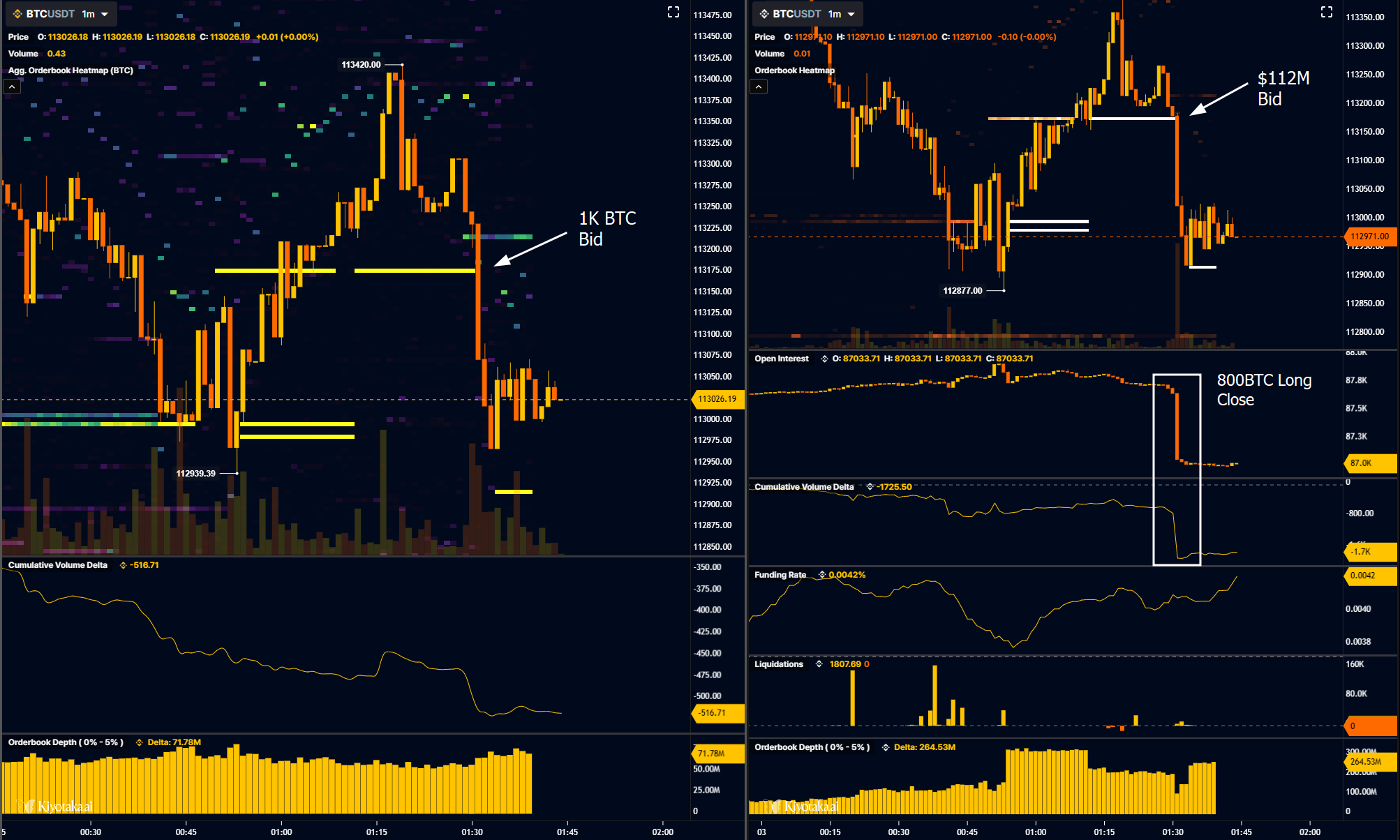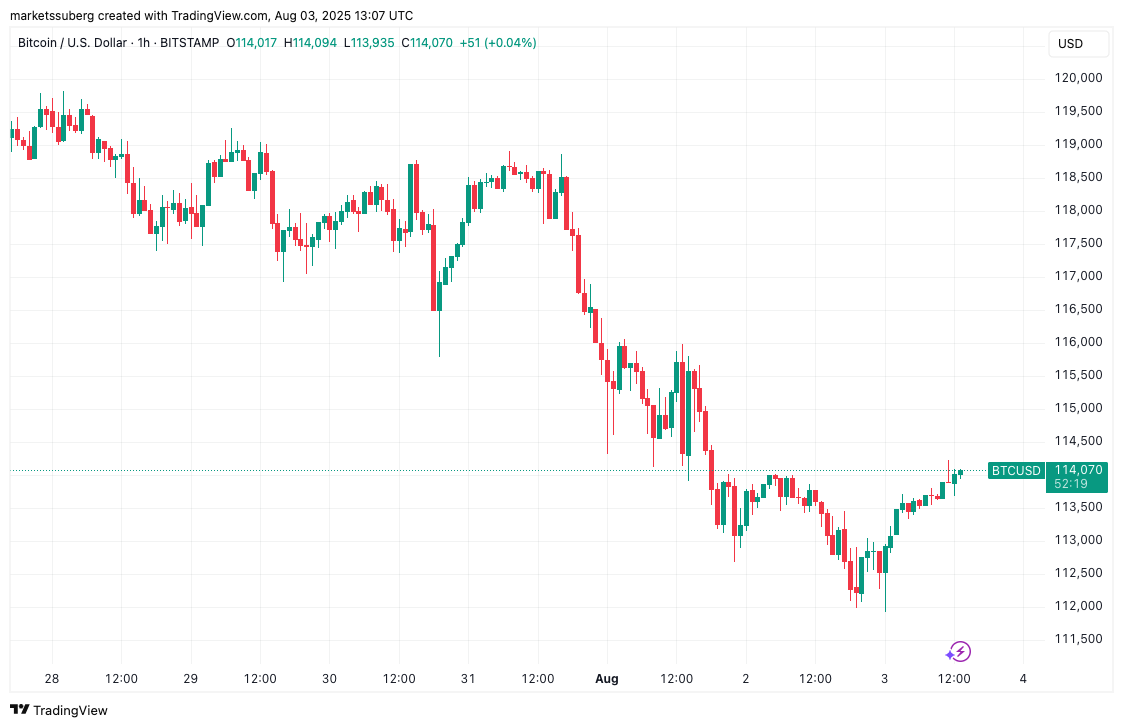Bitcoin exchange inflows have surged as BTC price dropped below $112,000, driven by both whales and short-term holders selling, signaling increased market pressure and potential for a deeper price correction.
-
Bitcoin whales and short-term holders are actively sending BTC to exchanges, intensifying selling pressure.
-
Exchange inflows have steadily increased since early July, marking a shift in investor behavior.
-
Large order-book activity indicates significant market exits, though Bitcoin attempts to reclaim $114,000.
Bitcoin exchange inflows rise as whales and speculators sell, pushing BTC below $112,000. Stay informed with COINOTAG’s latest market insights.
Why Are Bitcoin Whales and Short-Term Holders Increasing Exchange Inflows?
Bitcoin whales and short-term holders (STHs) are increasingly transferring BTC to exchanges amid price declines below $112,000. On August 1, short-term holders sent over 40,000 BTC to exchanges at a loss, the highest since mid-July. This surge reflects growing selling pressure as investors seek liquidity, with whales dominating deposits and signaling potential for further price drops.
What Does Rising Whale Activity Mean for Bitcoin’s Price?
Whale deposits to exchanges have pushed the Exchange Whale Ratio above 0.70, indicating that large holders are leading the selling wave. Market analysts warn this trend often precedes rapid price declines. If whales continue to offload BTC at this pace, the market may face extended downward pressure, increasing the risk of a prolonged correction.

Bitcoin STH coins sent in profit/loss to exchanges. Source: CryptoQuant
How Have Bitcoin Exchange Inflows Changed Since July?
Since early July, BTC inflows to major exchanges like Binance have steadily increased from approximately 5,300 BTC daily to around 7,000 BTC. This consistent rise ends a downtrend that began in March, indicating a shift in investor sentiment toward selling or repositioning holdings amid recent volatility.

Bitcoin BTC inflows 30-day moving average (screenshot). Source: CryptoQuant
What Are Traders Saying About Recent BTC Price Movements?
Market participants note unusual weekend price action, with large-volume sellers actively exiting positions despite typically lower liquidity. A prominent trader observed significant order-book activity indicating a major player liquidating risk before the new week, which may have contributed to the recent BTC price dip below $112,000.

BTC/USDT order book data. Source: Skew/X
What Is Bitcoin’s Current Price Outlook?
Despite recent declines, Bitcoin is attempting to recover, hovering near $114,000 at the time of writing. This rebound suggests some buying interest remains, but sustained whale selling and elevated exchange inflows could limit upward momentum and increase volatility in the near term.

BTC/USD 1-hour chart. Source: Cointelegraph/TradingView
Frequently Asked Questions
What causes Bitcoin short-term holders to sell during price dips?
Short-term holders typically sell during price dips to cut losses or secure profits, especially when market sentiment turns bearish, increasing BTC inflows to exchanges.
How does whale selling impact Bitcoin’s market stability?
Whale selling can create significant price swings due to large volumes entering the market, often leading to increased volatility and potential price corrections.
Key Takeaways
- Whale and short-term holder selling: Both groups are increasing BTC deposits to exchanges, intensifying selling pressure.
- Rising exchange inflows since July: Daily BTC inflows have steadily climbed, signaling a shift in investor behavior.
- Market volatility expected: Large order-book activity and whale selling suggest potential for deeper price corrections.
Conclusion
The surge in Bitcoin exchange inflows driven by whales and short-term holders reflects growing market uncertainty as BTC price dips below $112,000. While Bitcoin attempts to reclaim $114,000, sustained selling pressure may prolong volatility and correction phases. Monitoring exchange activity remains crucial for anticipating future price trends and investor sentiment.
